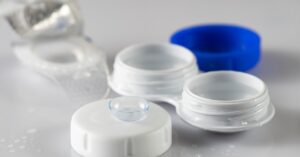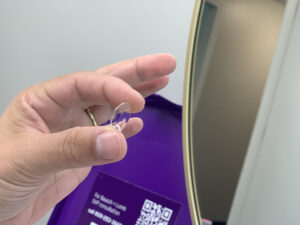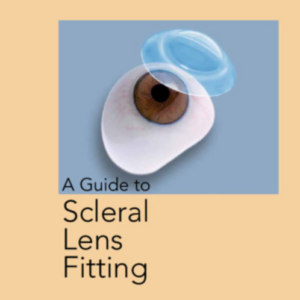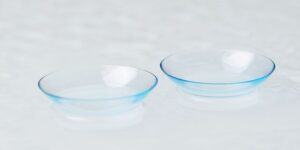Understanding Keratoconus
To fully comprehend the significance of scleral lenses in the treatment of astigmatism in keratoconus, it is essential to understand the condition itself. Let’s delve into what keratoconus is and the challenges it presents, particularly in relation to astigmatism.
What is Keratoconus?
Keratoconus is an eye condition characterized by the thinning and bulging of the cornea, which is the clear front surface of the eye. This structural irregularity causes the cornea to assume a cone-like shape, leading to distorted vision. The exact cause of keratoconus is still unknown, but genetic and environmental factors are believed to play a role.
Individuals with keratoconus often experience progressive nearsightedness and astigmatism. Astigmatism refers to an irregular curvature of the cornea, causing light rays to be scattered rather than focused on a single point. This results in blurred or distorted vision, both at close range and in the distance.
Challenges of Astigmatism in Keratoconus
When astigmatism occurs in conjunction with keratoconus, it adds an additional layer of complexity to vision correction. The irregular shape of the cornea in keratoconus exacerbates the astigmatism, making it difficult to achieve clear and sharp vision. Traditional corrective measures, such as glasses or standard contact lenses, may not adequately address the unique needs of individuals with both keratoconus and astigmatism.
In order to effectively manage the astigmatism associated with keratoconus, specialized contact lenses are often prescribed. These lenses are designed to conform to the irregular corneal shape, providing improved visual acuity and comfort.
To learn more about other treatment options and the role of scleral lenses in addressing keratoconus, continue reading our article on scleral lenses for keratoconus.
Exploring Hard Contact Lenses
When it comes to managing keratoconus and astigmatism, hard contact lenses have long been a popular choice. Among these, traditional rigid gas permeable (RGP) lenses have been widely used to correct vision and improve the visual clarity of individuals with these conditions.
Traditional Rigid Gas Permeable (RGP) Lenses
Traditional RGP lenses are made from a firm material that allows oxygen to pass through to the cornea, ensuring adequate eye health. These lenses are designed to sit directly on the cornea, providing a smooth and consistent refractive surface for light to pass through. By compensating for the irregular shape of the cornea in keratoconus patients, RGP lenses can help improve visual acuity and correct astigmatism.
RGP lenses offer several advantages, including durability, ease of handling, and good visual outcomes for certain individuals. Their rigid nature ensures the lenses maintain their shape, providing stable vision correction. However, it is important to note that RGP lenses may take some time to adapt to as they can initially feel slightly uncomfortable or cause mild irritation. This discomfort usually subsides as the eyes adjust to the lenses.
Limitations of RGP Lenses for Astigmatism
While RGP lenses can effectively correct astigmatism in some cases, they may have limitations for individuals with severe keratoconus or significant astigmatism. Due to the rigid nature of these lenses, they may not conform perfectly to the irregular shape of the cornea, resulting in potential vision issues, such as ghosting or halos around lights. In such cases, alternative options like scleral lenses may offer a better solution.
Scleral lenses, as discussed in the following section, are designed to provide a more comfortable fit and improved visual outcomes, particularly for individuals with astigmatism and advanced stages of keratoconus. To learn more about scleral lenses and how they can benefit individuals with keratoconus and astigmatism, continue reading in the next section, Introducing Scleral Lenses.
When considering hard contact lenses for astigmatism, it is crucial to consult with an eye care professional experienced in fitting and managing keratoconus cases. They can assess your specific needs and determine the most appropriate type of lens for your condition. Regular follow-up appointments and proper lens care will help ensure the best possible outcomes and ongoing eye health.
Introducing Scleral Lenses
When it comes to managing astigmatism in keratoconus, traditional contact lenses may not provide the desired level of clarity and comfort. This is where scleral lenses come into play. Let’s explore what scleral lenses are and how they can help individuals with astigmatism in keratoconus.
What are Scleral Lenses?
Scleral lenses are a type of hard contact lens that are larger in diameter compared to traditional contact lenses. They are designed to vault over the cornea and rest on the white part of the eye, known as the sclera. These lenses create a tear-filled space between the lens and the cornea, providing a smooth optical surface that helps to correct vision irregularities caused by keratoconus and astigmatism.
Scleral lenses are made from a highly breathable material that allows oxygen to reach the cornea, ensuring long-term eye health. Due to their larger size, they are more stable on the eye and less likely to dislodge during blinking, providing a more comfortable and secure fit.
How Scleral Lenses Help with Astigmatism in Keratoconus
In individuals with both keratoconus and astigmatism, the cornea becomes distorted and irregularly shaped. This irregularity can cause light to scatter and result in blurry or distorted vision. Scleral lenses are uniquely suited to address this issue by correcting the astigmatism and providing a smooth, uniform refractive surface.
The design of scleral lenses allows them to mask the irregularities of the cornea, effectively refracting light and compensating for the astigmatism. By creating a tear-filled reservoir, these lenses provide a stable and consistent optical surface that improves visual acuity and reduces aberrations caused by keratoconus.
Moreover, scleral lenses can also help with other vision-related challenges associated with keratoconus, such as increased sensitivity to light and glare. The larger size of scleral lenses provides a protective barrier, shielding the cornea from environmental irritants and reducing dryness. For more information on how scleral lenses can benefit individuals with keratoconus, check out our article on the benefits of scleral lenses.
By opting for scleral lenses, individuals with astigmatism in keratoconus can achieve improved vision and enhanced comfort throughout the day. However, it’s important to note that the fitting process for scleral lenses is more complex than traditional contact lenses. It involves a thorough assessment of the eye’s shape and measurements to ensure a proper fit. To learn more about the scleral lens fitting process, refer to our article on the scleral lens fitting process.
Scleral lenses provide an advanced and effective solution for individuals with astigmatism in keratoconus, offering improved vision correction, enhanced comfort, and protection for the eyes. If you are considering scleral lenses, consult with a qualified eye care professional who specializes in fitting these lenses to determine if they are the right option for you.
Benefits of Scleral Lenses for Astigmatism
When it comes to managing astigmatism in keratoconus, scleral lenses have emerged as a popular and effective solution. These specialized contact lenses offer several benefits that can significantly improve the vision and overall comfort of individuals with this condition.
Improved Vision Correction
One of the key advantages of scleral lenses for astigmatism is their ability to provide superior vision correction. Due to the irregular shape of the cornea in keratoconus, traditional contact lenses may not adequately correct astigmatism, leading to distorted and blurry vision. However, scleral lenses are designed to vault over the cornea, creating a smooth and even surface for light to pass through. This results in clearer and sharper vision, helping individuals with astigmatism in keratoconus to see more clearly.
Enhanced Comfort and Fit
Scleral lenses are known for their comfortable and secure fit. Unlike traditional rigid gas permeable (RGP) lenses, which can sometimes cause discomfort and irritation, scleral lenses rest on the sclera (the white part of the eye) without touching the cornea. This unique design provides a cushion of fluid between the lens and the eye, offering improved comfort throughout the day. The larger size of scleral lenses also helps to stabilize the lenses on the eye, reducing the chances of lens movement and dislocation.
To ensure optimal comfort and fit, it is crucial to undergo a thorough scleral lens fitting process. This involves taking precise measurements and customizing the lenses to fit the unique contours of the individual’s eyes. The fitting process may involve trial lenses and adjustments to achieve the best possible fit for maximum comfort and vision correction. For more information on the fitting process, refer to our article on the scleral lens fitting process.
Protection and Moisture for the Eyes
Another significant benefit of scleral lenses is their ability to provide protection and moisture to the eyes. The space between the back surface of the lens and the cornea acts as a reservoir for a saline solution, which keeps the cornea hydrated throughout the day. This is especially beneficial for individuals with dry eyes or those who experience discomfort with traditional contact lenses. Scleral lenses create a protective barrier that shields the cornea from external irritants, such as dust and debris, further enhancing the comfort and health of the eyes. To learn more about how scleral lenses can benefit individuals with dry eyes, check out our article on scleral lenses for dry eyes.
In summary, scleral lenses offer several advantages for individuals with astigmatism in keratoconus. These lenses provide improved vision correction, enhanced comfort and fit, and protection and moisture for the eyes. If you are considering scleral lenses as a treatment option for your astigmatism in keratoconus, consult with an eye care professional who specializes in fitting these lenses. They can guide you through the process and help determine if scleral lenses are the right choice for your unique needs.
Considerations for Scleral Lens Wearers
When considering scleral lenses as a treatment option for astigmatism in keratoconus, there are several important factors to keep in mind. These include the fitting process and customization, maintenance and care, as well as potential risks and complications.
Fitting Process and Customization
The fitting process for scleral lenses involves a series of steps to ensure a proper fit and optimal vision correction. It begins with a comprehensive eye examination conducted by an eye care professional specializing in contact lenses for keratoconus. During this examination, detailed measurements of the cornea are taken to create custom-made lenses that suit the unique needs of each individual.
The customization of scleral lenses allows for precise correction of astigmatism in keratoconus. The lenses are designed to vault over the irregular cornea, creating a smooth optical surface that enhances visual clarity. The fitting process may require multiple visits to fine-tune the fit and ensure optimal comfort and vision. For a detailed overview of the scleral lens fitting process, refer to our article on the scleral lens fitting process.
Maintenance and Care
Proper maintenance and care are essential for the longevity and effectiveness of scleral lenses. The following guidelines should be followed to ensure the lenses remain clean and safe for use:
- Cleaning: Scleral lenses should be cleaned daily using a recommended cleaning solution. This helps remove debris, protein deposits, and bacteria that may accumulate on the lens surface.
- Storage: After cleaning, the lenses should be stored in a sterile saline solution or a disinfecting solution recommended by the eye care professional.
- Hygiene: Clean hands are essential when handling scleral lenses. Thoroughly wash and dry your hands before inserting or removing the lenses to minimize the risk of contamination.
- Follow-up Visits: Regular follow-up visits with your eye care professional are crucial to monitor the health of your eyes and the condition of the lenses. These visits also provide an opportunity to address any concerns or discomfort you may be experiencing.
For more information on maintaining healthy eyes while wearing scleral lenses, consult with your eye care professional or refer to our article on scleral lenses for dry eyes.
Potential Risks and Complications
While scleral lenses can provide significant benefits for astigmatism in keratoconus, it is important to be aware of potential risks and complications. These may include:
- Discomfort: Some individuals may experience initial discomfort or a foreign body sensation when wearing scleral lenses. This can often be managed by adjusting the fit or using lubricating eye drops as recommended by the eye care professional.
- Dryness: Dryness may occur due to reduced oxygen permeability. However, scleral lenses are designed to trap a layer of tears between the lens and the cornea, providing moisture and protection. Eye drops or artificial tears may be used to alleviate any dryness symptoms.
- Infection: Although rare, the risk of infection exists with any type of contact lens wear. Proper hygiene, regular follow-up visits, and adherence to the recommended cleaning and storage protocols are crucial in minimizing this risk.
If you experience persistent discomfort, redness, or any unusual symptoms while wearing scleral lenses, it is important to consult your eye care professional immediately. They will be able to address any concerns and provide appropriate guidance.
By considering the fitting process, maintenance, and care, as well as potential risks and complications, scleral lens wearers can make informed decisions and maximize the benefits of this treatment option for astigmatism in keratoconus. Remember to follow the recommendations of your eye care professional and attend regular follow-up visits to ensure the best outcomes for your vision and eye health.
























